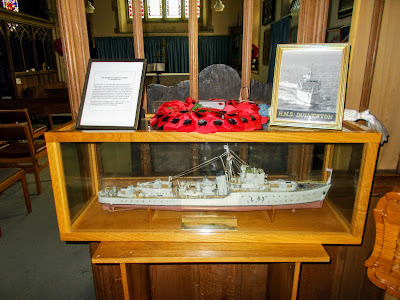The highly decorated rectangular carved stone font in St Augustine’s Church at Locking probably dates from the 12th century. At each corner there is a human figure with both arms outstretched to meet the hands of the figures on the adjacent corners. The figures are alternately male and female. Three of the four sides are also highly decorated with intertwined Celtic serpent designs. The fourth side is plainer with two bands of chevrons, probably because in its original location this side faced a wall.
The font originally stood on one central pillar. Four corner pillars were added in the 19th century for extra support. The head-dresses of the four figures were cut off in the 19th century when the rim of the font was reduced in height to make it level.
St Augustine’s Church was probably founded by the monks of Woodspring Priory in the 13th century. The oldest part of the present church is the tower, which dates from 1380, but this may have been built on the site of an earlier church.
Font
Font
Font
St Augustine's Church
St Augustine's Church











